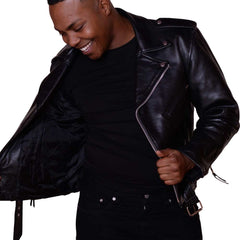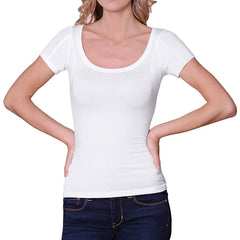What Is Hyperhidrosis?
Sweating is normal and healthy. That's certain.
However, if you find yourself experiencing heavy sweating for a significant time, you may have hyperhidrosis.
Hyperhidrosis is a fairly common condition. It causes the production of sweat beyond the amount needed to cool the body.
Odor may be a challenge associated with this condition.
According to studies, as many as 6 to 9 million Americans (2%-3% of the population) suffer from excessive sweating.
So, if you often wonder why you sweat more than everyone else, you're not the only one who feels this way.
The condition can manifest itself as:
- Palmar hyperhidrosis, which affects the hands.
- Plantar hyperhidrosis, which affects the feet.
- Axillary hyperhidrosis, which affects the armpits.

Photo: aestheticwellnessnyc
Underarm sweating usually starts in late adolescence. Sweating in the palms and soles often starts around age 13.
If profuse sweating goes unaddressed early on, it can become a life-long issue.
What Are the Effects of Hyperhidrosis?

Photo: Elaine Smith
Hyperhidrosis can be embarrassing.
Clothes wind up stained by yellow sweat marks, and in many cases, this is permanent.
Hyperhidrosis also complicates a person's social interactions.
And, in severe cases, the condition makes it hard to shake hands, hold a pen or grip a steering wheel.
Some experience night sweats (sweating profusely at night). This means waking up to drenched (and possibly smelly) sheets and pajamas.
What Causes Hyperhidrosis?
In certain cases, hyperhidrosis is the result of an underlying medical condition. In such a case, we refer to this as secondary hyperhidrosis.
Nevertheless, many people affected by the condition are otherwise healthy.
The term used when excessive sweating isn't traced to a disease, infection or condition is primary hyperhidrosis.
This highlights the importance of seeking a medical opinion to determine the issue.
Heat and emotions commonly trigger hyperhidrosis.
Nevertheless, the condition causes sweating irrespective of the time of day, weather conditions or mood.
What Is the Treatment for Hyperhidrosis?
Heavy sweating for a long time is cause for concern.
You should seek medical attention. Once you see a doctor, you'll undergo medical examinations.
After this, the findings will determine the best form of treatment for you from among the following:
Botulinum Toxin A (Botox)
Yes, you read that right.
When we hear mention of Botox, cosmetic procedures immediately come to mind.
Though its reputation precedes it, Botox also serves as a treatment method for hyperhidrosis.
It works by temporarily paralyzing muscles. This has seen it used widely in the field of medicine as a treatment for muscle spasms.
Most recently, it has become a solution for excessive sweating, particularly in the underarms.
You're probably wondering, "How does this work?"
First, a small amount of Botox gets injected into each armpit at roughly 20 spots on each side. This procedure makes use of a very fine needle.
A Botox injection may offer relief for about one year.
Take note:
Botulinum toxin A has received approval from the FDA for hyperhidrosis affecting the armpits.
However, it has yet to be approved for plantar and palmar hyperhidrosis.
Aluminum Chloride Hexahydrate
Normally, you can get over-the-counter antiperspirants. However, if they fail to offer much relief, your doctor may recommend aluminum chloride hexahydrate.
Pronouncing it can be a bit of work, but, thankfully, it's also referred to simply as Drysol.
This is a prescription-strength antiperspirant applied just before bedtime for two to three nights in a row. After this, your usage goes down to once a week or as per doctor's instructions.
Drysol is generally effective for many people struggling with excessive underarm sweating.
It is, however, not the go-to way to address palm and sole sweating.
Take note that Drysol isn't free of side effects, as it irritates the skin.
Thankfully, there's a way to ease this.
Dry your skin completely before application, then allow the antiperspirant to completely dry afterward.
You can also use anti-inflammatory drugs (e.g., a lotion containing a corticosteroid).
Iontophoresis
Since its introduction, iontophoresis has become widely used as a treatment for excessive sweating in the US.
In essence, iontophoresis works by blocking the sweat duct temporarily.
During the procedure, water conducts an electric current to the skin. This usually takes place in a session lasting roughly 20 minutes.
Patients undergo iontophoresis a few times a week. Subsequently, they undergo sessions every one to three weeks, depending on how they respond to the treatment.
For most people, iontophoresis is relatively painless.
miraDry
miraDry is a type of noninvasive treatment. It uses electromagnetic waves to destroy sweat glands, thereby stopping the production of sweat.
The skin undergoes cooling during this procedure, which lasts one hour on average.
The FDA approved miraDry for the treatment of underarm sweating in 2011.
Laser Treatment
For this treatment, lasers focus narrow beams of heat. This destroys sweat glands in the underarms, putting a stop to excessive sweating.
It is a relatively fast procedure with equally fast results.
Surgery
Hyperhidrosis is also treated using endoscopic thoracic sympathectomy (ETS).
ETS treatment addresses sweating in the palms or face. It works by interrupting the sympathetic nerves that control sweating.
It entails several steps:
- The surgeon makes two or three incisions (tiny cuts) where the excessive sweating occurs.
- The lung on the affected side gets deflated. This prevents air from moving in and out of it during the procedure.
- A tiny camera (called an endoscope) gets inserted through one of the cuts into your chest. The surgeon views the captured video on a monitor in the operating room.
- Once the surgeon identifies the nerves that control sweating in the affected area, they will cut, clip, or destroy these nerves.
- The lung is then inflated. Stitches (sutures) then close up the cuts.
The Hassle-Free Way to Beat Hyperhidrosis
Has excessive sweating been dampening your mood?
Has it left you feeling hesitant to fully immerse yourself in daily life? Then consider sweat-proof clothing.
Your regular t-shirts and undershirts are bound to wind up with unsightly yellow sweat stains.
In contrast, Sweatshield Undershirts are purposefully designed to tackle sweat at its origin.
 |
 |
Using an advanced sweat barrier technology, these undershirts:
- Keep you cool by allowing air to escape from the skin.
- Cover problem areas (underarms, back, and bottom).
- Offer comfort, thanks to a smooth micromodal fabric.
If you're looking for the best sweat-proof clothing, Sweatshield Undershirts has you covered. Literally.
Try our highly acclaimed tees for men and women to see why people from around the world love Sweatshield.Photo: UiHere










